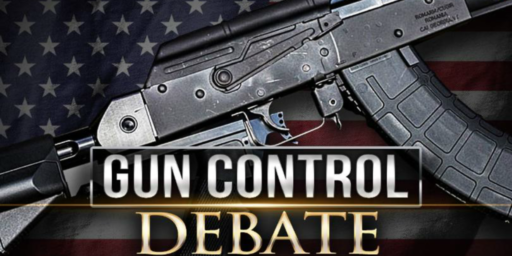Most States Let Drivers Exceed Speed Limit
The Associated Press has learned that highway patrol officers in the United States tend to allow drivers a cushion of ten miles per hour over the posted speed limit before issuing a ticket, something that every single American not employed by the AP has known since they were old enough to drive.
Most States Let Drivers Exceed Speed Limit (AP)
Authorities patrolling U.S. highways tend to give motorists a cushion of up to 10 miles per hour above the speed limit before pulling them over, says a survey by a group of state traffic safety officials.
This practice creates an unsafe comfort level at high speeds and is a potential safety hazard, according to the report being released Monday by the Governors Highway Safety Association. The group found that 42 states allow drivers to regularly exceed the speed limit before they are stopped.
“This cushion truly exists across this country and in some cases is more than 10 mph above posted limits,” said Jim Champagne, the association’s chairman. “Law enforcement needs to be given the political will to enforce speed limits and the public must get the message that speeding will not be tolerated,” said Champagne, who also is executive director of the Louisiana Highway Safety Commission.
Of course, it would help if posted speed limits were not so absurdly low in many places. Virtually none of us has any respect for these laws, which even the officers who write tickets to generate easy revenue enforce them don’t obey. Perhaps if the posted limit had some relation to actual risk, as is the case in Germany for example, people would take them more seriously.






In Germany and much of Europe, the upper speed limit is dependent on the type of vehicle and the equipment used. Tire rating will determine what your upper speed limit is. Also they don’t allow unsafe vehicles to be on the road (rusting, bad brakes, bald tires, etc.). Trying to use that criteria on some of the cars and trucks on our highways will be welcomed.
DCL: I won’t argue with you there. I’m not necessarily advocating autobahn-type speeds. Still, there are plenty of speed trap 25 or 35 mph limits in places that don’t warrant them or 55 mph limits in places where 65 would be more appropriate.
I agree, there are a lot of posted speed limits that are too low.
Also, generally what seems to cause the biggest traffic problems isn’t speeding (within 10 miles or so of the posted limit) but with a huge descrepancies between the slowest and fasted cars.
I think most interstate highways can easily post a 70 mph limit, and most other state highways 60 mph, it is the more residential areas that the really low limits make sense, but there is a two lane highway where a part of it is posted at 40 mph, and other parts are 50-there isn’t any difference in the 40 and 50 mph portions-it makes no sense.
Another factor is that the resources tied up in a speeding stop often amounts to more than the value, law-enforcement-wise, of punishing the offense.
States do announce speed crackdowns during which the cushion approaches zero in the high-intensity enforcement areas (they can’t be everywhere), but by announcing the crackdowns they do more to deter speeding than to punish it, which from a resource standpoint might make it worthwhile — except that to stage the crackdown credibly they have to divert so much manpower to it that other priorities get short shrift.
The fact is, speed alone isn’t the safety nightmare it’s been made out to be, and traffic enforcement people know it. That’s why you can do 70-plus on the 55-posted I-285 freeway in Atlanta without risking a ticket; the other drivers staying closer to the legal limit are also changing lanes at random (not always on purpose), tailgating, and failing to secure the ladders on their truck racks. Thus devoting manpower to getting the overall speeds back down to 55 just doesn’t make sense even if 55 were a sensible speed limit.
I could not agree more with the Germany comparison. Why does the government pretend that speed limits keep us so safe? Speed limits in most places are absurd… take, for example the states I have driven in most – Tennessee and Iowa. In Tennessee, the interstate (or freeway, whatever), is 70 mph. That is fairly realistic in a state where even the interstate is curvy and hilly. Iowa, on the other hand has a speed limit of 65 mph, even though you can almost always see for miles, where 65 mph seems like tractor speed. I mean, what sense does that make?
I suspect they set the limits where they do precisely because most people are going to exceed them by only so much. Those who would do 90 mph on an Iowa interstate wouldn’t be likely to observe the school zone speed limit either.
I come through my son’s school zone everyday around time school gets out. It never ceases to amaze me how some people do not slow down in the school zone when the 25 mph light is flashing, especially women driving minivans! I also had an unmarked law enforcement vehicle going past me in the zone doing at least 40. The problem is these people don’t think the laws are going to be enforced or that they don’t apply to them. I generally go about 70 on the highways, but I ALWAYS obey school speed limits and the flashing red lights on school buses. I wish the cops will put up more traps at these places to catch these people.
Being someone that routinely drives 65 to 90 on Interstates , I never speed in my city driving . Low limits on city streets & in school zones make sense so I obey them .